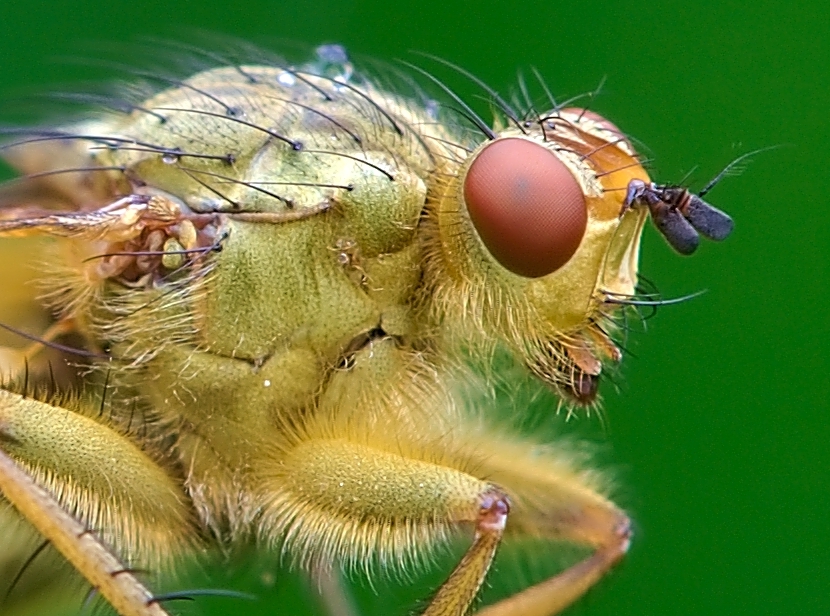|
Fritz Goro
Fritz Goro (originally Fritz Gorodiski; born 1901 in Bremen, (Germany) – died 14 December 1986 in Chappaqua, New York) was the inventor of macrophotography and a photographer specializing in science, published in the ''Life magazine'' and '' Scientific American'', after he started his career as a photojournalist in Germany. Goro documented many major scientific breakthroughs, including pictures of the first plutonium ever produced, the first atomic-bomb test, the advent of microelectronics, the ruby laser, as well as photos of Ali Javan timing the frequency of light at M.I.T. laboratory. Goro was described by the evolutionary biologist Stephen Jay Gould Stephen Jay Gould (; September 10, 1941 – May 20, 2002) was an American paleontologist, evolutionary biologist, and historian of science. He was one of the most influential and widely read authors of popular science of his generation. Gould sp ... as "the most influential photographer that science has ever known". Ref ... [...More Info...] [...Related Items...] OR: [Wikipedia] [Google] [Baidu] |
Bremen
Bremen (Low German also: ''Breem'' or ''Bräm''), officially the City Municipality of Bremen (german: Stadtgemeinde Bremen, ), is the capital of the Germany, German States of Germany, state Bremen (state), Free Hanseatic City of Bremen (''Freie Hansestadt Bremen''), a two-city-state consisting of the cities of Bremen and Bremerhaven. With about 570,000 inhabitants, the Hanseatic League, Hanseatic city is the List of cities in Germany by population, 11th largest city of Germany and the second largest city in Northern Germany after Hamburg. Bremen is the largest city on the River Weser, the longest river flowing entirely in Germany, lying some upstream from its River mouth, mouth into the North Sea, and is surrounded by the state of Lower Saxony. A commercial and industrial city, Bremen is, together with Oldenburg (city), Oldenburg and Bremerhaven, part of the Bremen/Oldenburg Metropolitan Region, with 2.5 million people. Bremen is contiguous with the Lower Saxon towns of Delmenhor ... [...More Info...] [...Related Items...] OR: [Wikipedia] [Google] [Baidu] |
Chappaqua, New York
Chappaqua ( ) is a hamlet and census-designated place in the town of New Castle, in northern Westchester County, New York, United States. It is approximately north of New York City. The hamlet is served by the Chappaqua station of the Metro-North Railroad's Harlem Line. In the New York State Legislature it is within the New York State Assembly's 93rd district and the New York Senate's 40th district. In Congress the village is in New York's 17th District. Chappaqua was founded by a group of Quakers in the 1730s and was the home of Horace Greeley, ''New-York Tribune'' editor and U.S. congressman. Since the late 1990s, former President Bill Clinton and former Secretary of State Hillary Clinton have lived there. History In the early 1730s, a group of Quakers moved north from Purchase, New York, to settle in present-day Chappaqua. They built their homes on Quaker Road (more recently, Quaker Street) and held their meetings at the home of Abel Weeks. Their meeting house was built ... [...More Info...] [...Related Items...] OR: [Wikipedia] [Google] [Baidu] |
Macrophotography
Macro photography (or photomacrography or macrography, and sometimes macrophotography) is extreme close-up photography, usually of very small subjects and living organisms like insects, in which the size of the subject in the photograph is greater than life size (though ''macrophotography'' also refers to the art of making very large photographs). By the original definition, a macro photograph is one in which the size of the subject on the negative or image sensor is life size or greater. In some senses, however, it refers to a finished photograph of a subject that is greater than life size. The ratio of the subject size on the film plane (or sensor plane) to the actual subject size is known as the reproduction ratio. Likewise, a macro lens is classically a lens capable of reproduction ratios of at least 1:1, although it often refers to any lens with a large reproduction ratio, despite rarely exceeding 1:1. Apart from technical photography and film-based processes, where the s ... [...More Info...] [...Related Items...] OR: [Wikipedia] [Google] [Baidu] |
Life Magazine
''Life'' was an American magazine published weekly from 1883 to 1972, as an intermittent "special" until 1978, and as a monthly from 1978 until 2000. During its golden age from 1936 to 1972, ''Life'' was a wide-ranging weekly general-interest magazine known for the quality of its photography, and was one of the most popular magazines in the nation, regularly reaching one-quarter of the population. ''Life'' was independently published for its first 53 years until 1936 as a general-interest and light entertainment magazine, heavy on illustrations, jokes, and social commentary. It featured some of the most notable writers, editors, illustrators and cartoonists of its time: Charles Dana Gibson, Norman Rockwell and Jacob Hartman Jr. Gibson became the editor and owner of the magazine after John Ames Mitchell died in 1918. During its later years, the magazine offered brief capsule reviews (similar to those in ''The New Yorker'') of plays and movies currently running in New York City, bu ... [...More Info...] [...Related Items...] OR: [Wikipedia] [Google] [Baidu] |
Scientific American
''Scientific American'', informally abbreviated ''SciAm'' or sometimes ''SA'', is an American popular science magazine. Many famous scientists, including Albert Einstein and Nikola Tesla, have contributed articles to it. In print since 1845, it is the oldest continuously published magazine in the United States. ''Scientific American'' is owned by Springer Nature, which in turn is a subsidiary of Holtzbrinck Publishing Group. History ''Scientific American'' was founded by inventor and publisher Rufus Porter (painter), Rufus Porter in 1845 as a four-page weekly newspaper. The first issue of the large format newspaper was released August 28, 1845. Throughout its early years, much emphasis was placed on reports of what was going on at the United States Patent and Trademark Office, U.S. Patent Office. It also reported on a broad range of inventions including perpetual motion machines, an 1860 device for buoying vessels by Abraham Lincoln, and the universal joint which now can be found ... [...More Info...] [...Related Items...] OR: [Wikipedia] [Google] [Baidu] |
Photojournalist
Photojournalism is journalism that uses images to tell a news story. It usually only refers to still images, but can also refer to video used in broadcast journalism. Photojournalism is distinguished from other close branches of photography (such as documentary photography, social documentary photography, war photography, street photography and celebrity photography) by having a rigid ethical framework which demands an honest but impartial approach that tells a story in strictly journalistic terms. Photojournalists contribute to the news media, and help communities connect with one other. They must be well-informed and knowledgeable, and are able to deliver news in a creative manner that is both informative and entertaining. Similar to a writer, a photojournalist is a reporter, but they must often make decisions instantly and carry photographic equipment, often while exposed to significant obstacles, among them immediate physical danger, bad weather, large crowds, and limi ... [...More Info...] [...Related Items...] OR: [Wikipedia] [Google] [Baidu] |
Plutonium
Plutonium is a radioactive chemical element with the symbol Pu and atomic number 94. It is an actinide metal of silvery-gray appearance that tarnishes when exposed to air, and forms a dull coating when oxidized. The element normally exhibits six allotropes and four oxidation states. It reacts with carbon, halogens, nitrogen, silicon, and hydrogen. When exposed to moist air, it forms oxides and hydrides that can expand the sample up to 70% in volume, which in turn flake off as a powder that is pyrophoric. It is radioactive and can accumulate in bones, which makes the handling of plutonium dangerous. Plutonium was first synthetically produced and isolated in late 1940 and early 1941, by a deuteron bombardment of uranium-238 in the cyclotron at the University of California, Berkeley. First, neptunium-238 ( half-life 2.1 days) was synthesized, which subsequently beta-decayed to form the new element with atomic number 94 and atomic weight 238 (half-life 88 years). ... [...More Info...] [...Related Items...] OR: [Wikipedia] [Google] [Baidu] |
Microelectronics
Microelectronics is a subfield of electronics. As the name suggests, microelectronics relates to the study and manufacture (or microfabrication) of very small electronic designs and components. Usually, but not always, this means micrometre-scale or smaller. These devices are typically made from semiconductor materials. Many components of normal electronic design are available in a microelectronic equivalent. These include transistors, capacitors, inductors, resistors, diodes and (naturally) insulators and conductors can all be found in microelectronic devices. Unique wiring techniques such as wire bonding are also often used in microelectronics because of the unusually small size of the components, leads and pads. This technique requires specialized equipment and is expensive. Digital integrated circuits (ICs) consist of billions of transistors, resistors, diodes, and capacitors. Analog circuits commonly contain resistors and capacitors as well. Inductors are used ... [...More Info...] [...Related Items...] OR: [Wikipedia] [Google] [Baidu] |
Ruby Laser
A ruby laser is a solid-state laser that uses a synthetic ruby crystal as its gain medium. The first working laser was a ruby laser made by Theodore H. "Ted" Maiman at Hughes Research Laboratories on May 16, 1960. Ruby lasers produce pulses of coherent visible light at a wavelength of 694.3 nm, which is a deep red color. Typical ruby laser pulse lengths are on the order of a millisecond. Design A ruby laser most often consists of a ruby rod that must be pumped with very high energy, usually from a flashtube, to achieve a population inversion. The rod is often placed between two mirrors, forming an optical cavity, which oscillate the light produced by the ruby's fluorescence, causing stimulated emission. Ruby is one of the few solid state lasers that produce light in the visible range of the spectrum, lasing at 694.3 nanometers, in a deep red color, with a very narrow linewidth of 0.53 nm.''Principles of Lasers'' By Orazio Svelto – Plenum Press 1976 Page 367–37 ... [...More Info...] [...Related Items...] OR: [Wikipedia] [Google] [Baidu] |
Ali Javan
Ali Javan ( fa, علی جوان, Ali Javān; December 26, 1926 – September 12, 2016) was an Iranian-American physicist and inventor. He was the first to propose the concept of the gas laser in 1959 at the Bell Telephone Laboratories. A successful prototype, constructed by him in collaboration with William R. Bennett, Jr., W. R. Bennett, Jr., and Donald R. Herriott, D. R. Herriott was demonstrated in 1960. His other contributions to science have been in the fields of quantum physics and spectroscopy. Life and career Ali Javan was born in Tehran to Iranian Azerbaijanis, Iranian Azerbaijani parents originally from Tabriz. He attended a school conducted by Zoroastrians.''Smithsonian (magazine), Smithsonian April 1971 (Volume 2, Number 1)'', ''Ali Javan and his 40 lasers'', Francis E. Wylie He graduated from Alborz High School, and started his university studies at the School of Science at the University of Tehran for a year. During a visit to New York in 1948, he attended several gr ... [...More Info...] [...Related Items...] OR: [Wikipedia] [Google] [Baidu] |
Stephen Jay Gould
Stephen Jay Gould (; September 10, 1941 – May 20, 2002) was an American paleontologist, evolutionary biologist, and historian of science. He was one of the most influential and widely read authors of popular science of his generation. Gould spent most of his career teaching at Harvard University and working at the American Museum of Natural History in New York. In 1996, Gould was hired as the Vincent Astor Visiting Research Professor of Biology at New York University, after which he divided his time teaching between there and Harvard. Gould's most significant contribution to evolutionary biology was the theory of punctuated equilibrium developed with Niles Eldredge in 1972.Eldredge, Niles, and S. J. Gould (1972)"Punctuated equilibria: an alternative to phyletic gradualism."In T.J.M. Schopf, ed., ''Models in Paleobiology''. San Francisco: Freeman, Cooper and Company, pp. 82–115. The theory proposes that most evolution is characterized by long periods of evolutionary stabili ... [...More Info...] [...Related Items...] OR: [Wikipedia] [Google] [Baidu] |
1901 Births
Nineteen or 19 may refer to: * 19 (number), the natural number following 18 and preceding 20 * one of the years 19 BC, AD 19, 1919, 2019 Films * ''19'' (film), a 2001 Japanese film * ''Nineteen'' (film), a 1987 science fiction film Music * 19 (band), a Japanese pop music duo Albums * ''19'' (Adele album), 2008 * ''19'', a 2003 album by Alsou * ''19'', a 2006 album by Evan Yo * ''19'', a 2018 album by MHD * ''19'', one half of the double album '' 63/19'' by Kool A.D. * '' Number Nineteen'', a 1971 album by American jazz pianist Mal Waldron * ''XIX'' (EP), a 2019 EP by 1the9 Songs * "19" (song), a 1985 song by British musician Paul Hardcastle. * "Nineteen", a song by Bad4Good from the 1992 album ''Refugee'' * "Nineteen", a song by Karma to Burn from the 2001 album ''Almost Heathen''. * "Nineteen" (song), a 2007 song by American singer Billy Ray Cyrus. * "Nineteen", a song by Tegan and Sara from the 2007 album '' The Con''. * "XIX" (song), a 2014 song by S ... [...More Info...] [...Related Items...] OR: [Wikipedia] [Google] [Baidu] |







